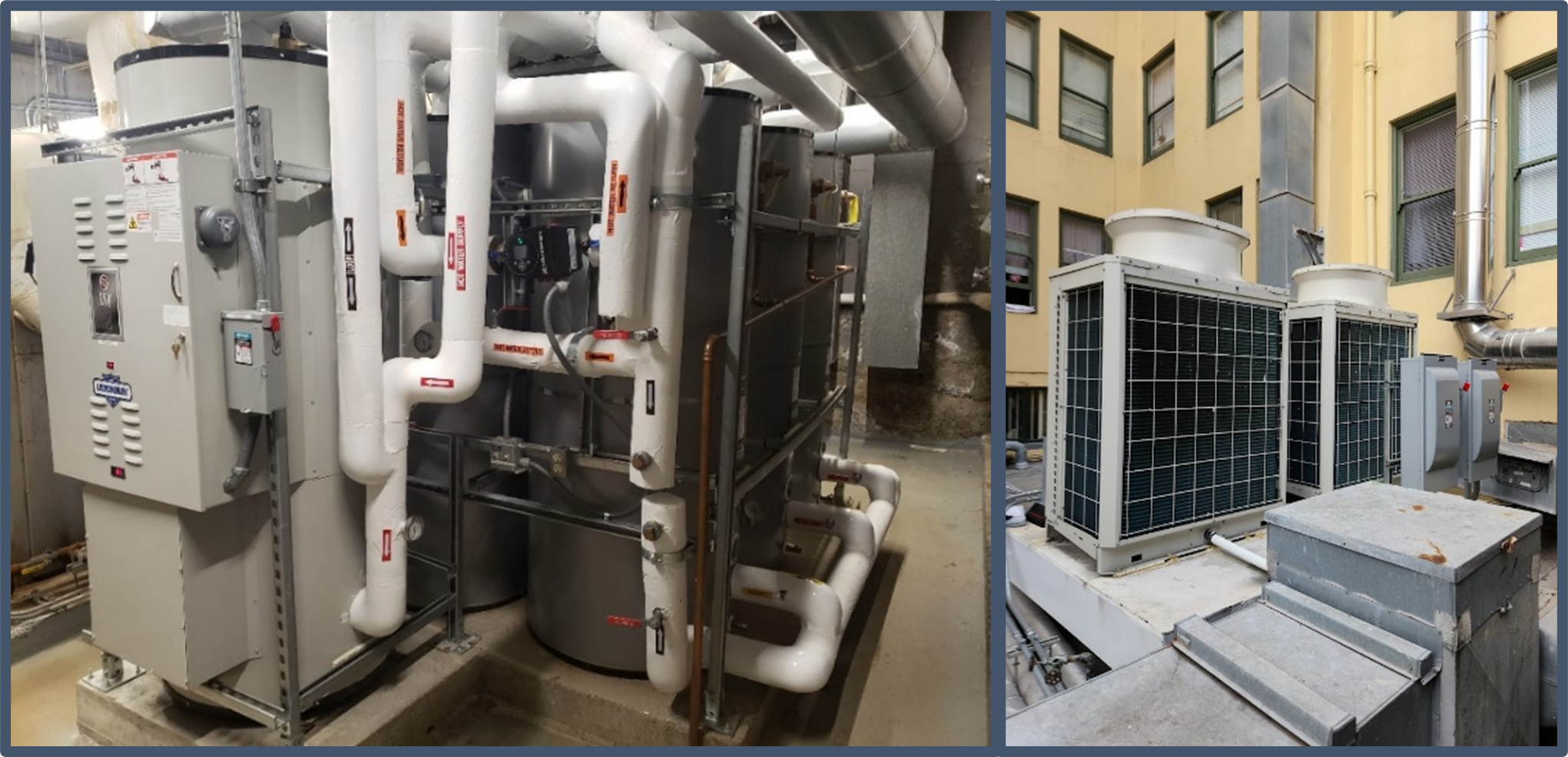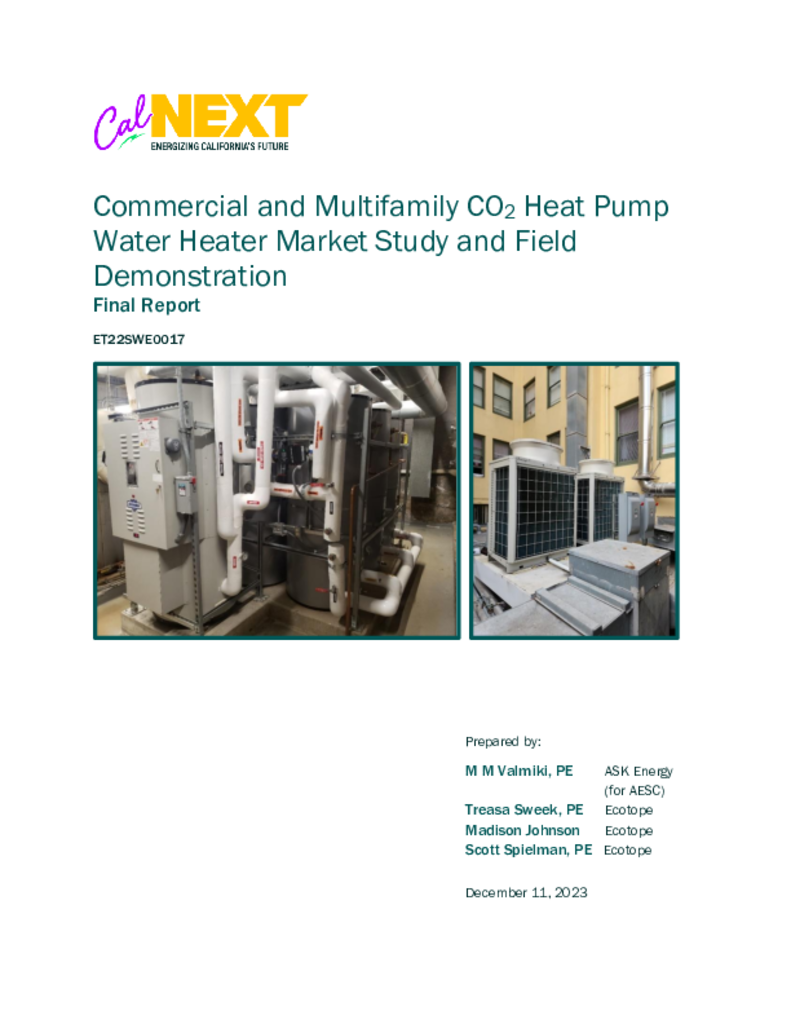ET22SWE0017 - Commercial and MF CO2-based Heat Pump Water Heater Market Study and Field Demonstration

AESC proposes a California-focused market study and field demonstration of an all-electric CO2 refrigerant heat pump water heater (HPWH) designed for central systems in commercial and multi-family (MF) buildings. The technology supports electrification strategies, is highly energy efficient, capable of demand response and load shifting through use of inherent thermal storage, and uses natural CO2 refrigerants with low global warming potential (GWP). It can supply hot water up to 195° F and works in low ambient conditions with a modular design allowing up to 16 units to cover capacities from 135,000 to 2,100,000 Btu/h.
The technology is commercially available and was introduced by the manufacturer within the past two years in limited markets, including New York, Massachusetts, Washington, Oregon, and Northern California. To date, it has very low market penetration in California with only a handful of new construction projects currently in design. Technology barriers include high up-front costs, lack of product awareness in the design and stakeholder community, and complexities inherent to custom design requirements of large central systems. However, sizing and design barriers are gradually being addressed through tools like Ecotope’s “Ecosizer” https://calbem.ibpsa.us/resources/ecosizer/. This tool can be used for system sizing based on expected loads, building characteristics, and location but is not an energy modeling tool. Thus, it does not correlate with existing regulatory tools like CBECC. However, fundamental research into the performance of these systems in the field is needed to support future updates of CBECC and other building modeling software to accurately integrate central CO2 HPWH products.
The study will build on existing research and non-residential HPWH initiatives with a focus on the California market, policies, rate structures, efficiency programs, demand flexibility programs, and market barriers. The field study will evaluate product performance and impacts on energy, cost, and green house gas emissions (GHG) of the technology relative to baseline natural gas as well as load flexibility capabilities in the context of CA rates and the new Total System Benefit (TSB) metric for EE programs. The product will be installed, monitored, and analyzed at two participant MF sites.
Based on empirical benefits, study recommendations will focus on targeted strategies for California’s CPUC-funded retrofit and new construction resource programs, the SGIP demand flexibility program, and workforce education and training (WE&T) programs to overcome current barriers and support broad market adoption. For instance, SGIP has a forthcoming load shift incentive offering for water heaters yet no available product has demonstrated that ability . This study will demonstrate real-world central HPWH load shifting capabilities, how they can support the new SGIP goals, and gather information necessary for developing future test and verification protocols.
Recommendations for possible technology improvements to optimize benefits and future design iterations will also be explored. If the field study observes less energy, carbon, and load shift impacts than expected, discussions will focus on why results were below expectations how they can be improved. Conclusions will focus on items such as cost, installation challenges, energy and capacity performance, customer satisfaction, and load shifting abilities.
This work studies California (CA) multifamily building applications of central heat pump water heating (CHPWH) systems with carbon dioxide (CO2) refrigerant. Two low-income elder living buildings in San Francisco were retrofitted with CHPWH systems, presenting an opportunity to study the emerging technology in situ. The project team collaborated with the building owners, system designers, and heat pump equipment manufacturers to study the performance and load shifting capacity of the system. The project team used these results to quantify system energy efficiency benefits, market potential, and electrical load management. The report includes recommendations for product design, program support, and additional future study directions.

